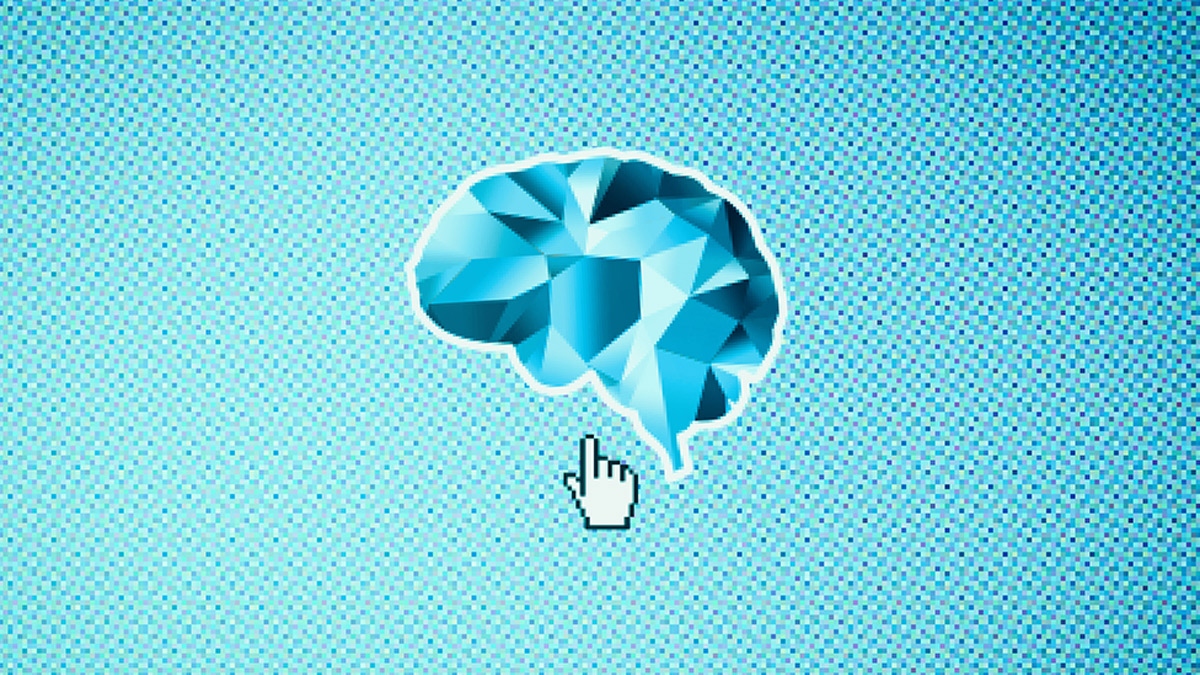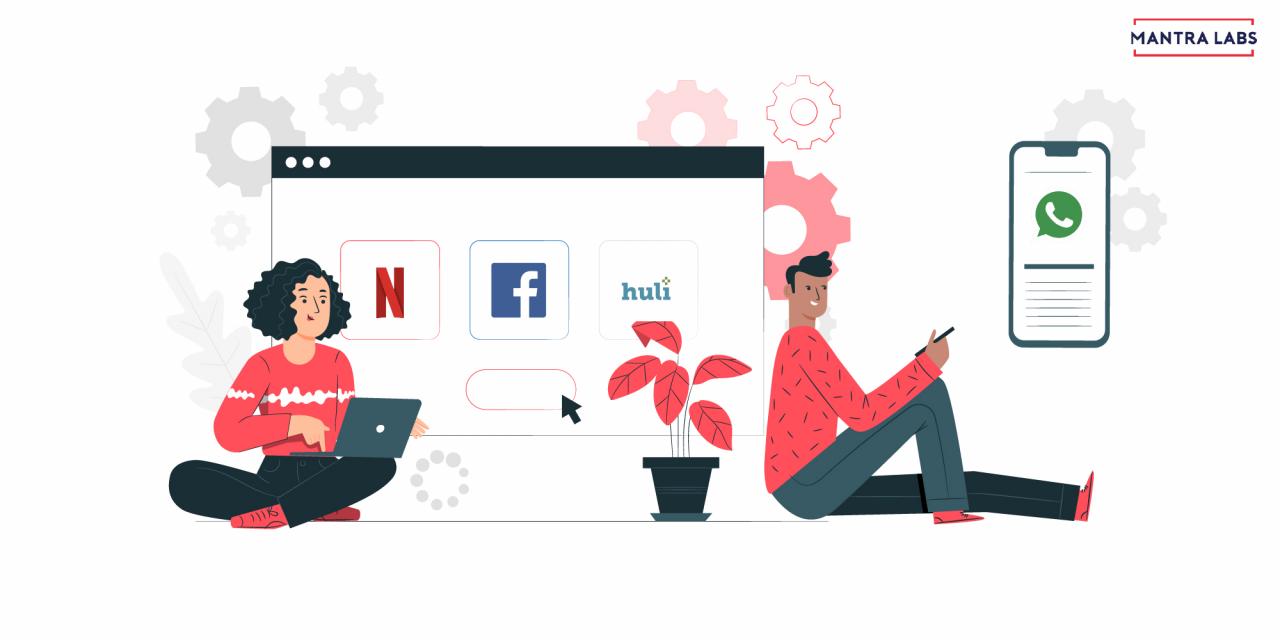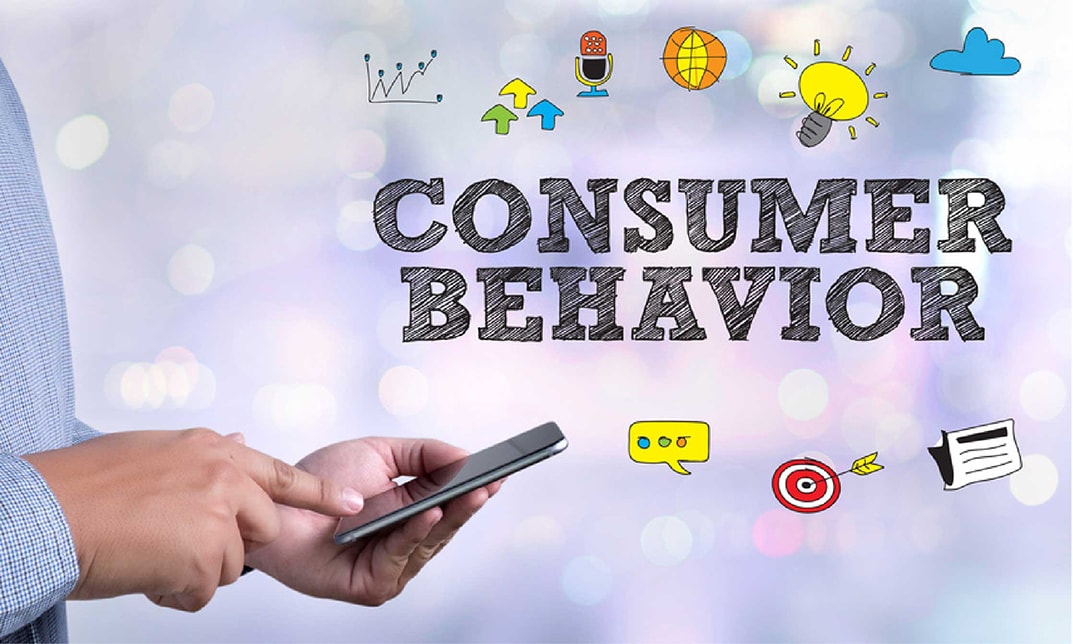The increasing density of digital connections and the widespread availability of data are changing the competitive landscape in virtually every industry. Customer and employee expectations and behavior are changing, barriers to market entry are lowering, and digital platforms are scaling at lightning speed-all of which is turning established business models upside down and making any competitive advantage short-lived.

How does digital really affect business? What challenges will operating companies face in the process of digital transformation? What tools should an entrepreneur have in order to design a digital business model that will ensure a startup’s survival in the VUCA environment?
Steel innovations, or how it all began
How disruptive innovations work in practice was demonstrated to the Western world by small steel factories long before the startups. Until the 1980s, large factories dominated the industry, but they were gradually forced to give way to small factories: they produced steel of worse quality, but required much less investment.
This model was described in 1997 by former Harvard professor Clayton Christensen in his book The Innovator’s Dilemma. In brief, it looks like this: in a market dominated by incumbent – large companies, leaders in a particular industry, an insurgent or disruptor appears – small firms, which giants usually do not pay attention to, and radically change the game rules, gradually cutting off larger and larger chunks of the market from corporations.
The phenomenon itself is not new. What matters is that digitalization is accelerating this dynamic and making the possibility of displacement by technology start-ups or start-ups much more likely.
Industrial organization: lessons for survival in a VUCA environment
The environment in which companies compete is fundamentally transforming. The customer is changing, the technology behind products and services is changing, capital is becoming cheaper, and more dynamic digital industries are emerging. An indicator of change, among other things, is the increasing dynamics of the S&P 500 Index, which includes the largest U.S. companies by capitalization. The average length of time a company has been in the index is shrinking and the interchangeability of organizations is increasing.
The conditions of modern instability are often designated by the acronym VUCA, where each of the letters indicates a spectrum of growing phenomena: Volatility (instability, high rate of change), Uncertainty, Complexity (complexity, many factors for decision-making), Ambiguity (non-obviousness, lack of awareness and predictability).
Business used to exist in a world of linear structures. We had to manage the value chain, where everything is simple and clear: building relationships with the supplier and with the customer. Today, the linear system is starting to transform into a network, within which the company has to interact with a number of players who perform different roles at different points in time.
We used to have a long planning horizon, we built 10-year strategic plans. In the new environment, it is much more difficult to create a strategy and build a competitive advantage over the long term, so we are using approaches built on the Agile philosophy.
Large companies, most of which were formed in the 20th century according to the model of industrial organization, by their nature cannot change flexibly, so they become less and less relevant to the environment in which they exist, and begin to “malfunction”. Today they still make a lot of money and provide jobs for a huge number of people, but to remain viable tomorrow they must change dramatically. Profound systemic change is needed – culture, competencies, strategic planning, approaches, and metrics used in decision-making must change.

The Hype Cycle and the Increase in Digital Density
The lifecycle of almost all new technologies that appear in the world and become our reality is described by the Gartner Hype Cycle, one of the leading analysts in the technology world. It is a very useful diagnostic tool that allows you to quickly dive into the situation that is emerging in a particular technology area.
Big companies typically think about digital transformation through the Gartner curve. They pick a technology that everyone’s talking about right now, for example, artificial intelligence, and answer the question, “Do we have a strategy in AI? What’s our strategy in Big Data?” Through analyzing the dynamics of specific technology trends, they’re trying to predict how their business will change. This approach is very limited in its usefulness, because all we see on this curve are symptoms, manifestations of a much more fundamental technological trend that is more than 50 years old. We used to call it digitalization or digitalization.
To think more systematically about how digitalization will affect companies’ businesses, we need to look at the hype curve through the lens of three basic elements: connectivity, data, and collaboration.
Digitalization leads to new gadgets and technologies that act as connections. With them, we connect an increasing proportion of the elements of the physical world to the digital world, thereby increasing digital density. This entails dramatic changes in the way we do business and compete. The emergence of ecosystems is one example.
Any element of a company’s business model can be connected to digital, be it product, customer, equipment or supplier. Most importantly, as soon as technology emerges that allows you to connect a new element of your business model to the digital world, prepare for the environment in which you compete to change dramatically. For example, the banking and restaurant industry has been turned upside down by the fact that the customer is connected directly to the digital world.
The increased density of digital connections gives businesses the ability to collect data in a fundamentally different way. And the new data allows for causal relationships, rapid hypothesis testing, and new sources of value creation within the business model to adapt it to meet the demands of a changing environment. To imagine what many industries might look like in the future, just look at what’s happening in online advertising. There, the density of digital connections has long been close to its maximum, and algorithms, not humans, are making the decisions.
What would a world of 100% digital density look like? In 2015 at Davos, former Google CEO Eric Schmidt made an interesting point: “The day will come when the Internet will disappear. There will be so many IPs, so many devices, sensors, things you wear, things you interact with, that you will stop noticing them. They will become integral and constant aspects of your life.”
If you’ve played Pokemon Go, you’ve probably seen that the future Schmidt was talking about is already here: the lines between the offline and online worlds are slowly blurring. It is important to understand that digital transformation is not about how to create an offline business and turn it into an online business. It’s about how to create business models and organizations that are viable and successful in a world where those boundaries don’t exist.

Retail: The barcode as a portal to the future of the industry
Retail is a prime example of how the growth of digital density in a single industry is beginning to change it dramatically. In the early 1970s, the barcode was introduced to connect the product to the digital world. Stores had access to a vast array of product data: quantity, price, weight, location, availability, speed of sale. Within the retail business model, a giant new practice that now defines the industry – inventory management – began to take shape.
The advent of the barcode was Walmart’s finest hour, national supermarket chains emerged, the structure of the industry changed, and new players entered the game. Twenty years later, in the early 1990s, when the Internet was not yet widespread, there appeared the Electronic Data Interchange. It was a kind of protocol that allowed big retailers to share data on goods with all partners in the supply chain, first of all – with suppliers. This resulted in a whole set of new practices in inventory management.
Later on, the customer – individual shoppers or households – connected to the digital world via cell phone or smartphone. They began to shop online, which made the emergence of Amazon possible. Digital density continues to grow, and we’re moving right to the point where companies will know everything about the goods and products in our homes, understand the intensity of use and the level of residuals. That’s what the Internet of Things is all about.
Business model: inside out vs. outside in
New data and its use implies building new interactions – new activities in the context of the business model. The business model describes how value is created and how it is monetized. It typically includes four elements: customer, task, operational, and financial models. Industrial organizations use a traditional inside-out approach to strategy formation and business model building. It boils down to identifying key and unique competencies, which are difficult to copy and which provide the company with a competitive advantage. They are the starting point for all subsequent decisions on what to do with the company in the future.
Startups use an outside-in approach, where the starting point for reasoning about the business model is not inside the company, but outside. They push back from the customer’s pain and think about what needs to be done to solve the existing problem and make the customer feel good.
New digital connections and data give companies the ability to serve new customers or expand the range of tasks they are closing for current ones. In a large number of industries, especially manufacturing, these new interactions are less about the customer and the offering, but involve a realignment of the operating model. At the level of the financial model, the benefit to the company translates into network effects and cost reductions.
What is the best way to use numbers in building new businesses or changing existing ones? My personal belief: you should always start with the customer, even when your focus is on improving the company’s operating model.

Types of business models: moving from product to solution
In terms of configuration, all business models fall into three types: product-based, customer solution-based and platform-based business models (lock in). It is important to understand how digitalization changes the logic of value creation and moves the business model from the product paradigm to the customer solution or platform paradigm.
The classic of the genre is the product model, on which 80% of all industries are historically based. An illustration of the product logic is a company that sells a drill and thinks about its value through the product. The product comes to the customer in the form in which it was created; customization and custom solutions are not provided here.
Tech companies originally also existed in a product paradigm and sold boxed solutions, which are essentially the same drill. Subsequently, the SaaS (Software as a Service) paradigm emerged, where a boxed solution was transformed into a subscription. And that became the trigger for the transition from product to solution, because the fact that a customer might not renew a subscription very quickly changes the company’s thinking.
The key concept that underlies the customer solution business model is Jobs to be done. “When people buy a drill, they don’t need the drill itself. They want the holes in the wall,” Kotler wrote about this as early as his marketing “Bible.” Growing digital density is giving companies fundamentally new ways to solve customer problems. At the same time, the new ways of solving may look completely different from the drill. As an option, this solution could be a “man-on-the-hour” service. If you are able to solve the full range of a customer’s problems, their willingness to continue working with you will grow steadily.
When we sell drills, we measure product margins at the financial model level. When we move to a customer solution, we start measuring LTV or Customer Lifetime Value. And that’s a big shift: if we close a customer’s tasks over ten years, we’ll make more money over their entire lifecycle than if we sell them a product.

Platforms: winner takes it all, or the lock in effect
When Amazon launched its online bookstore in the mid-1990s, it was the solution. The marketplace Amazon created is a platform. If we play the platform game, we don’t sell books ourselves. We create an environment for other small and medium-sized players to sell books directly to customers. Any marketplace is an example of a platform as a business model.
When we talk about platforms as a business model, we’re talking about multilateral markets. Platforms create value by connecting different categories of customers and enabling direct interactions between them.
A platform serves three basic functions. The first is to attract a critical mass, or enough customers for each party. The second is to provide matching, or lay down certain mechanisms that allow a customer on one side to find the best customer on the opposite side. The third function is support. You have to provide the infrastructure that will ensure that customers interact effectively. Any platform is an intermediary, but not every intermediary is a platform.
The platform provides a unique interface that connects customers to each other. For example, the Apple Store itself is not a unique interface, because in theory anyone can run it. The unique interface here becomes the operating system through which customers interact.
There is a second very important element that relates to platforms. This is the network effect. Very often we describe it through audience growth, but that is not quite correct. In fact, the concept of “network effect” comes from communication – we realized that it exists when telephone networks appeared. It describes the fact that as the number of users of a platform grows, its value to users increases. At the same time, the platform itself may not change in any way.
Why are platforms so popular today, and why do so many people want to use them? Because it is not easy for the customer to get out of the network, which means there is a possibility of a lock-in effect, or that your platform as the winner will “take it all”. If you fall into this scenario, you can monetize the service any way you want.
In complex platforms where there are three sides or more, there will be a lot of network effects. And you need a detailed analysis of their configuration to see if your platform is even likely to be the one that takes everything. With a comprehensive network effects analysis, you can also figure out exactly how to monetize the platform, because it’s a much more complicated thing than monetizing products and solutions.
The first factor that is important to consider is often described as switching costs – the cost to the customer of switching from platform A to platform B. The likelihood of a “winner takes all” situation will be higher when the switching costs are quite high. An example is switching from iOS to Android.
The second factor is multi-homing costs, the cost to the customer of simultaneous presence on platforms A and B. For example, the cost of simultaneous use of Yandex Go and Gett services is not a problem for the user.
It is also important to analyze not only the traditional network effects, which are tied to the number of users, but also to think about capturing value for the customer through the growth of data volume.
A basic principle: The way you monetize should never diminish the cumulative positive network effects that exist on the platform. That means you shouldn’t take money from the side of the platform that creates a lot of positive network effects.

The founder of the freelance search service Guru told me how he once decided to go to his home country of India to meet some of the biggest providers that work on his platform. He was shocked to see that these guys had more business than his entire platform. In essence, they were using his service as a lead generator: finding a customer and taking them off the platform. To prevent this from happening again in the future, Guru created a rating system for providers that makes it unprofitable for them to take clients off the platform.
Another approach is to create additional value across the range of interactions that occur between customers on both sides. This can be a variety of additional services from facilitating financial transactions to arbitration if issues arise, so that interacting directly is less profitable than through the platform.
In general, if you want to build a platform business, don’t think about global platforms – they’re very hard to build. Think about unique uncovered needs: local niche platforms that cover a specific need of customers in one segment are a real and very interesting story.
The case of Groupon: where mistakes in the business model lead
In November 2011, Groupon, which offers customers discounts on goods and services, had one of the most promising IPOs on the U.S. NASDAQ, the largest for an internet company since Google’s IPO in 2004. The market then valued the company at about $11 billion, but a year after the IPO, Groupon had quadrupled in price. The business model, and with it, the platform’s financial performance failed to meet investors’ expectations. What was the reason for the crushing failure of one of the brightest American startups at the time?
To answer this question, it is important to understand the key feature of the platform business. It lies in the fact that it is not the platform itself that is responsible for the fullest and most effective solution of the client’s tasks on side A, but the clients on side B. Therefore, when creating a platform, it is crucial that the profile of the clients and the profile of their tasks on each side do not contradict each other. Otherwise, we will get a two-sided platform where negative network effects work both ways. This is exactly what happened to Groupon.
The old, familiar to many, concept of “Long tail” will also help us understand the situation. This is a business model in which the total sales of a number of not very popular niche products at the tail end of the distribution, if you picture it as a graph, can exceed the sales of the bestselling products. Most new companies come in far from the tail end of the market. They start with customers that no one has ever served in principle, and they win. Especially since it’s easy to move from the tail to the head later on: you just need to add adequate customer service and hire an account manager.
To build a successful business in the tail of distribution, a company needs to have a lot of customers, cheap scaling, and low costs. Automation (of processes, mechanical work, decision making through AI) is a key mechanism for reducing costs in the tail. The growth of digital density and the data gained through new digital connections gives us almost limitless opportunities to reduce variable costs, and thus allow us to build businesses at the tail end of distribution and work with customers who are each only able to spend a very small amount of money.
Another important mechanism for reducing variable costs is self-service systems (Self-Service). Companies increasingly allow or force clients to do everything themselves – just think of the process of ordering a cab through Yandex Go or Gett. At the same time, the customer gets more control, their satisfaction grows, and the company’s costs go down.

Groupon’s biggest mistake was that they built an operating model focused on the “head,” which didn’t match the customer profile on the vendor side, where Groupon served mostly the “tail.” Vendors subsidized the customer’s first visit, but he did not come back to them later, because his key objective was to try new things as cheaply as possible.
A bright idea helped the company grow to a huge size, but as a result it made its business unwieldy and inefficient. In fact, Groupon burned through $11 billion to make an international expansion into unscalable models. Then they spent a very long time licking their wounds.
To remedy the situation, the platform launched a service called Groupon Now! Its advantage was that it allowed them to manage customer flows for businesses at special times, such as at times when demand is traditionally low and potential customers are “hungry” or bored. So they changed the Push principle to Pull, where the customer told themselves what they wanted in the moment. And it increased conversion rates many times over.
In the context of all-consuming digitalization, how do you design your own startup in a VUCA environment and not screw it up? My answer: live your daily life with your eyes wide open, pay attention to where your needs as a customer are really badly covered or not covered at all.
The second prerequisite is to analyze the market and look for an industry where customer needs are closed very poorly and where the big players (incumbents) are making a lot of money. As soon as you see the intersection of these two conditions, go ahead and create a startup. The tools, models and cognitive frameworks described here can help you with that and become a starting point for your thinking. In practice everything will be much more complicated, but the superpower of models is that they help you keep in your head a coherent picture of where we are going and how we think about it. You won’t get an answer through this toolkit, but you’ll get a foundation to clearly articulate what hypotheses it’s important for you to test. And the final answers will come to you only through practice.
